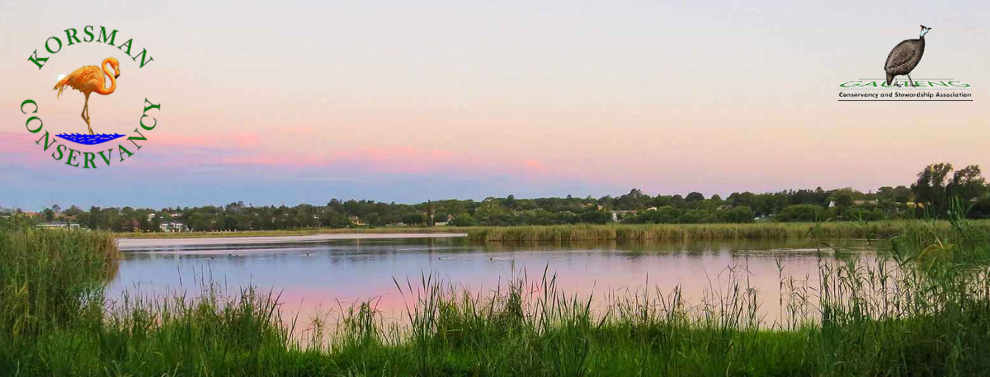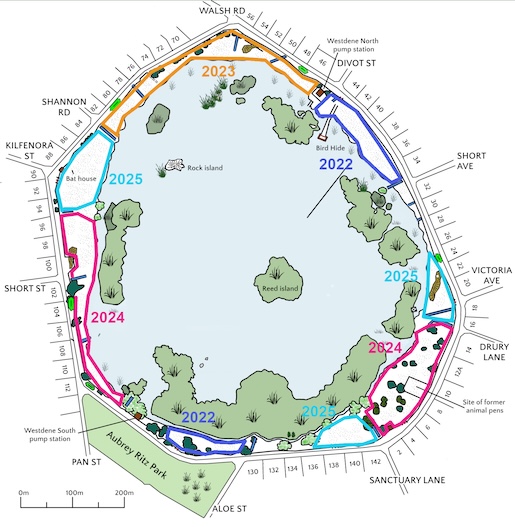
KORSMAN CONSERVANCY

Controlled Ecological Burning Plan
Burning is an essential veld management tool. The ideal burn interval per block is three years, with a minimum of two and a maximum of four.
Volunteers are welcome.
The burning programme has shown dramatic ecological benefits. The grassland is refreshed from a moribund state. This provides grazing to waterbirds such as Spur-winged Geese, dozens of which died of starvation before the programme started in 2015. Significant species of insects have returned.
Challenges at Korsman are:
- Urban area
- Proximity of fence
- Proximity of reed beds
Burn Units
The blocks are burnt in rotation according to the map.
Target date
Late July to late August.
Optimum Weather conditions
Wind speed 5-20km/h, direction depending on burn block.
Relative humidity 20-50%
Temperature: Below 25 deg C
Green or yellow fire warning according to AFIS app
Objectives
1. Remove moribund grass to stimulate spring wild flowers and indigenous grasses
2. Remove non-ecological dead wood for ease of alien vegetation management
3. Second phase of management plan for invasive kikuyu grass
4. Manage bush encroachment by Gomphocarpus fruticosis.
5. Reeds in water: To remove accumulated dead material. Regrowth will allow better access by waterfowl, and reduce height of regrowth which does not have to outcompete each previous year.
Notifications
- Benoni Fire Dept
- Community:
- Korsman Conservancy members and Facebook pages
- Lakewest Resident's Association
- Interested people and volunteers
- Affected residents
- Lakewest security
- Media: Benoni City Times
- Ekurhuleni departments and Ward Councillor
Equipment
- Petrol/diesel lighting mix
- Rubber fire beaters
- Backpack sprayers
- 5l water cans for pre-fire wetting and refilling sprayers
- First aid kit
- Metal rakes
- Leather gloves
- Matches / newspaper fire torches
Preparation
Clear along fence with rake down to mineral soil.
Clear breaks along start and end of blocks. Wetline on the day if necessary.
Cut and rake around trees to drip line. Remove low branches.
Cut reeds near shore and pull away to create a damp mud line.
Cut long grass on banks and near fence where high flames might occur.
Avoid burning under trees with concentrations of leaf litter, especially oak trees.
Brief volunteers on safety and the burn procedure before the burn starts.
Appoint experienced volunteers as leaders.
Open gates adjacent to burn block to provide extra access.
Locate tortoises and move them out of the burn block.
Smoke management
Request public space patrol vehicle to direct traffic where necessary.
Proposed Lighting sequence – dependent on actual conditions
One fire line only to provide escape route for small mammals. No spot fires.
Back burn when necessary, in consultation with Fire Department.
Control smoke by lighting away from the fence, to draw smoke towards burnt area.
Risks and Mitigations
1. Dead trunks might smoulder for days - No inherent risk, but inform community in advance. Douse smouldering logs where possible during post-fire management.
2. Hot fire - Brief crew in advance
3. Dead stumps and high organic matter soil from which fire can travel underground - Monitor post fire for smouldering and hotspots. Wet down hotspots after burning.
4. Reeds close to burn area - Prepare area well. Cut reeds back and pull away by rake to create damp or wet area on shore. Light fire on the shore to prevent whirlwind developing and lifting embers.
Emergencies
Ambulance ER24 084124





